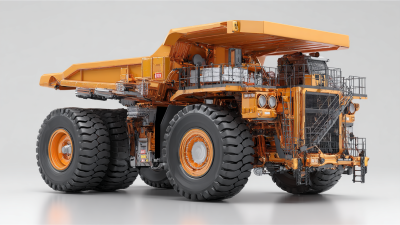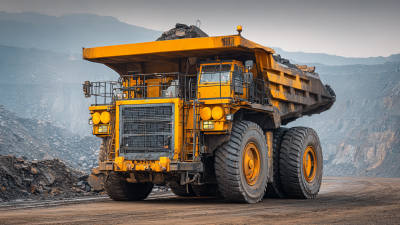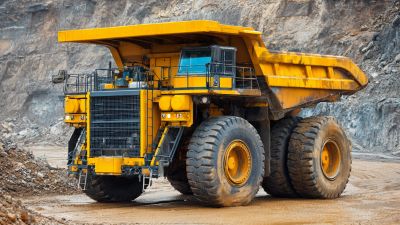In the ever-evolving landscape of the mining industry, the role of Heavy Mining Trucks has become increasingly pivotal. As per the latest market research by Fortune Business Insights, the global heavy-duty truck market is projected to reach a staggering USD 175 billion by 2025, with a significant portion attributed to the mining sector. These robust vehicles are not only crucial for transporting massive amounts of materials from excavation sites but are also designed to withstand the harshest environments, making them indispensable for efficient mining operations.
The introduction of advanced technology and innovative features has further enhanced the capabilities of Heavy Mining Trucks. The Global Mining Truck Market Report emphasizes that the demand for trucks with higher payload capacities and improved fuel efficiency is on the rise. With manufacturers focusing on sustainable practices, many of the top contenders in 2025 will showcase electric or hybrid models, addressing both environmental concerns and operational costs. Understanding the top Heavy Mining Trucks for the coming year is vital for industry stakeholders looking to optimize performance and productivity in their mining operations.

In 2025, the heavy mining truck industry is set to showcase remarkable advancements in technology and efficiency. Among the top contenders, five heavy mining trucks stand out for their innovative features and operational capabilities. These vehicles are specifically designed to handle the demanding conditions of modern mining operations, ensuring enhanced productivity and safety.
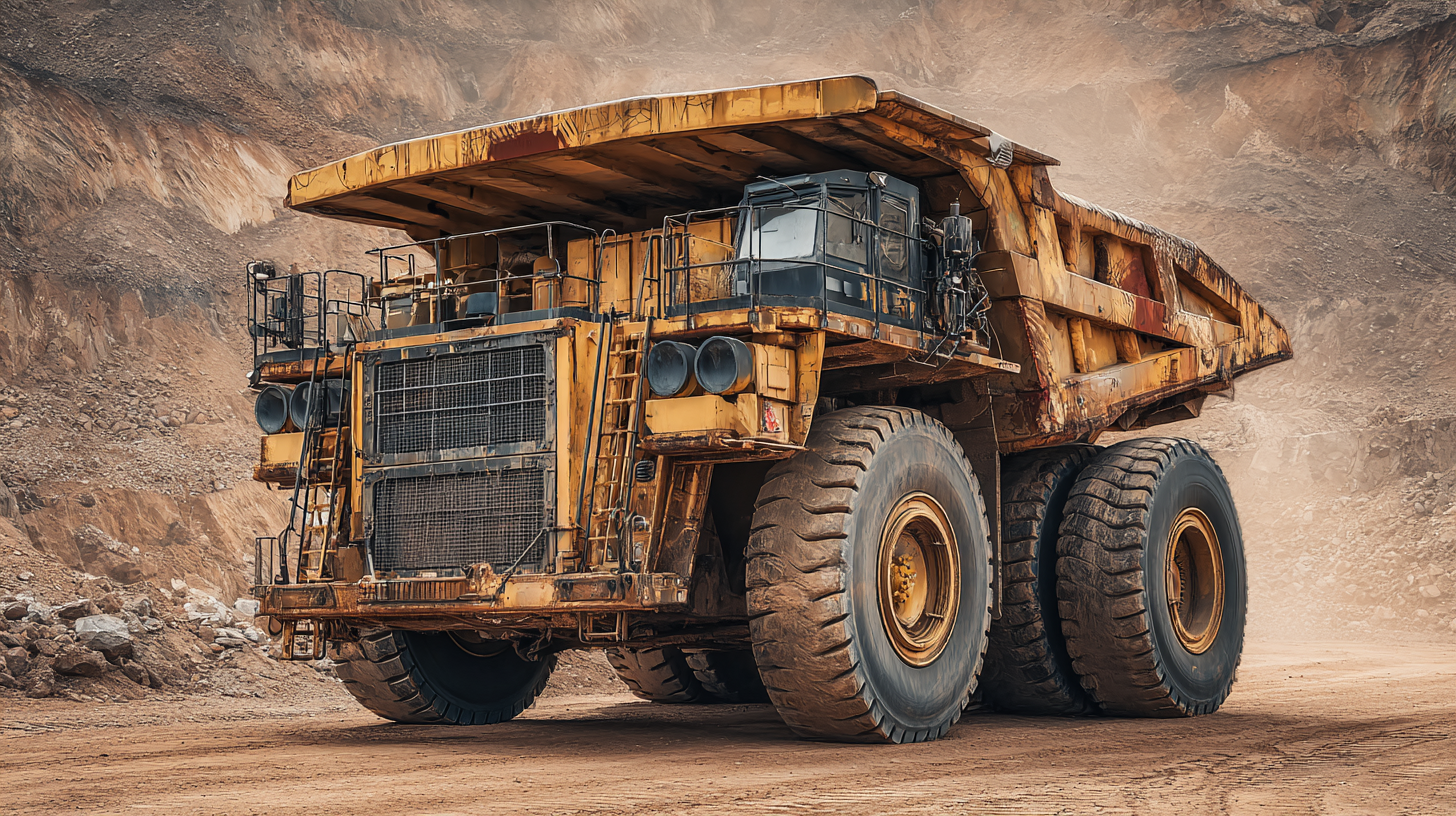
One prominent trend is the integration of advanced automation and telemetry systems in these trucks. This technology allows for real-time monitoring and data analysis, improving decision-making processes and optimizing fuel consumption. Additionally, with the growing focus on sustainability, many of these trucks are being developed to reduce emissions and operate more efficiently, aligning with global environmental standards.
As Australia continues to lead in mining projects, including those extracting vital resources like gold and uranium, the significance of these heavy trucks in supporting such large-scale operations cannot be overstated. Their reliable performance is crucial in achieving efficiency targets while navigating the vast terrains of major mining sites.
As we look ahead to 2025, the heavy mining trucks on the market are expected to showcase advancements in technology and performance metrics that are crucial for enhancing operational efficiency in the mining industry. Key specifications such as engine power, payload capacity, and fuel efficiency will play a significant role in determining the effectiveness of these trucks. For instance, trucks equipped with advanced hybrid engines are anticipated to offer not only superior power but also reduced emissions, aligning with global sustainability goals.
In addition to engine specifications, performance metrics like speed, durability, and ease of maintenance will be essential in evaluating the overall value of these heavy mining trucks. Future models are likely to feature enhanced suspension systems for improved traction and stability on rough terrains, alongside smart technologies for real-time monitoring of vehicle health and performance. Such innovations are expected to minimize downtime and maximize productivity, making these trucks indispensable assets in modern mining operations.
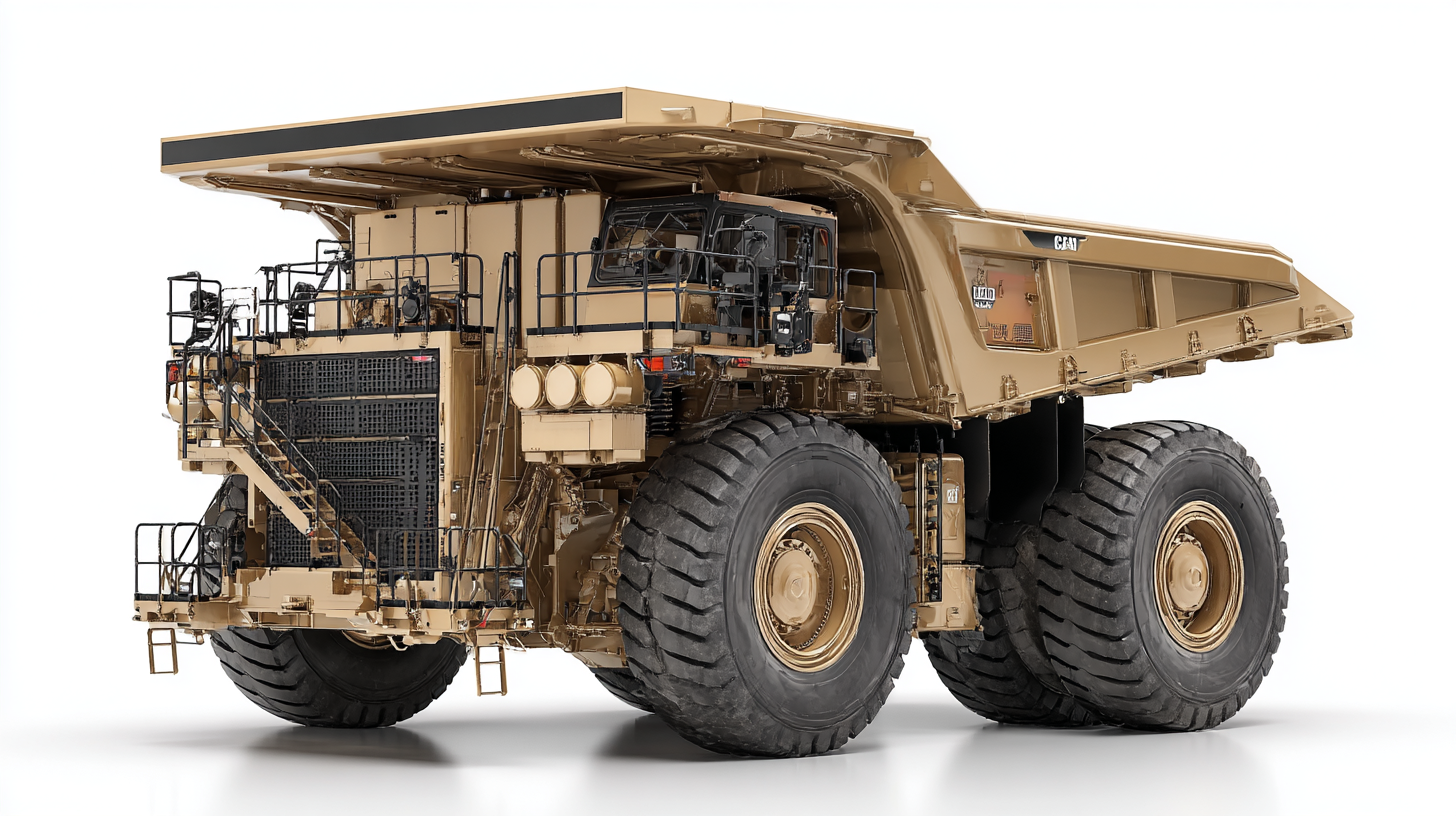
The mining industry is witnessing significant advancements in engine technology, which are crucial for the efficiency and performance of heavy mining trucks. These innovations not only enhance the power and torque of trucks but also improve fuel efficiency and reduce emissions. As regulations on environmental impact become more stringent, the integration of cleaner engine technologies such as electric or hybrid systems is becoming increasingly common. These systems provide a sustainable alternative that meets the heavy demands of mining operations while addressing environmental concerns.
Tips: When selecting a heavy mining truck, consider the engine type that best fits your operational needs. For instance, if your operations are in remote locations where charging stations may be scarce, a fuel-efficient diesel engine may be more practical. Additionally, keep an eye out for manufacturers that prioritize innovative technologies that prioritize both power and sustainability, as these will likely provide a competitive edge in the long run.
Furthermore, ongoing research in areas such as turbocharging and exhaust after-treatment systems is contributing to the next generation of mining trucks. These technological evolutions not only help in maximizing performance but are also tailored to meet the specific challenges faced in demanding mining environments. By investing in trucks featuring the latest engine technology, companies can enhance productivity while minimizing their carbon footprint.
The heavy mining trucks of 2025 are poised to integrate advanced safety features that respond to the increasing demands for operational safety and efficiency in mining environments. Key safety innovations will focus on enhanced visibility and accident prevention systems. Features such as 360-degree cameras and advanced sensor technologies will enable drivers to detect obstacles and hazards more easily, significantly reducing the risk of collisions in rugged terrains.
Additionally, adherence to stricter safety standards is anticipated to play a critical role in the design and manufacturing of these vehicles. The implementation of automated emergency braking systems and improved roll-over protection measures will help to mitigate risks associated with heavy machinery operation. As companies prioritize worker safety, the integration of these advanced safety features not only complies with regulatory requirements but also aims to create a safer work environment, ultimately leading to increased productivity in the competitive mining industry.
The heavy mining truck market is poised for significant growth by 2025, driven by escalating demand for minerals and the expansion of mining operations globally. According to a report by Market Research Future, the global heavy mining truck market is projected to reach approximately $XX billion by 2025, with a compound annual growth rate (CAGR) of about 3.5% from 2020 to 2025. This trend is fueled by increasing investments in infrastructure development, particularly in emerging economies, which are discovering new mineral deposits and enhancing their mining capabilities.
Moreover, advancements in technology are also reshaping this sector, leading to the adoption of electric and autonomous mining trucks. For instance, a report from Grand View Research highlighted that the electric heavy mining truck segment is expected to showcase a staggering growth rate of around 5.1% over the forecast period. As companies seek to reduce their carbon footprints and operational costs, there is a notable shift towards sustainable mining practices, indicating that demand for sophisticated, eco-friendly mining trucks will likely increase significantly in 2025.
| Truck Model | Payload Capacity (tons) | Fuel Type | Engine Power (HP) | Operating Weight (tons) | Market Demand (Units) |
|---|---|---|---|---|---|
| Model A | 200 | Diesel | 450 | 400 | 1500 |
| Model B | 250 | Diesel | 550 | 420 | 1200 |
| Model C | 300 | Electric | 600 | 450 | 900 |
| Model D | 220 | Diesel | 500 | 390 | 1100 |
| Model E | 280 | Diesel | 650 | 420 | 1300 |
